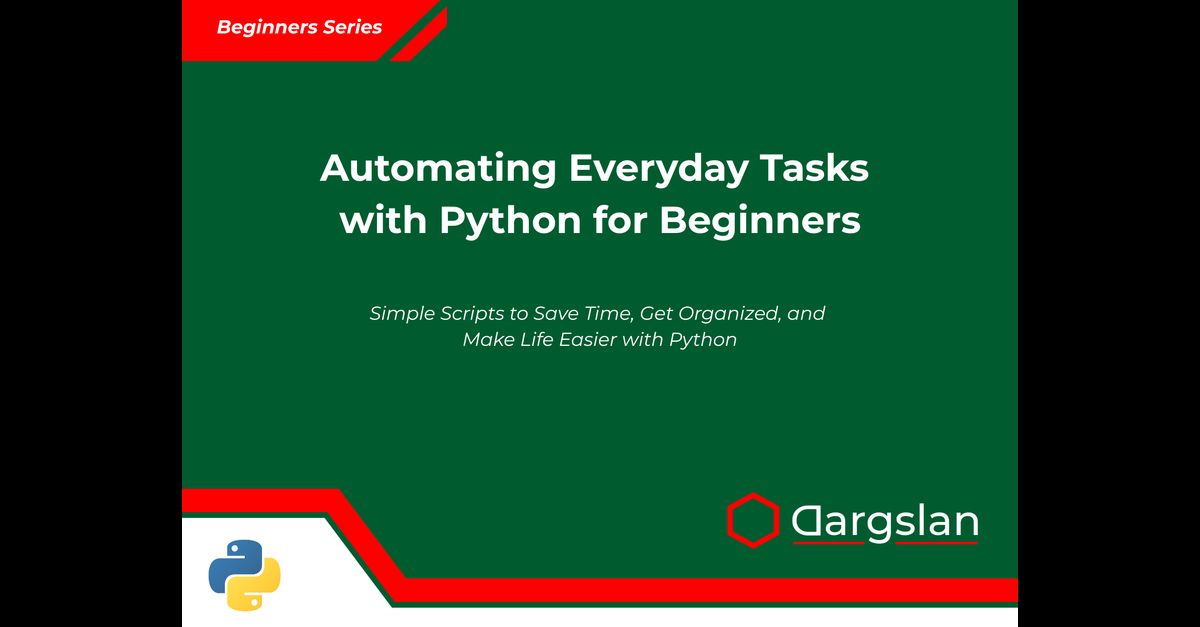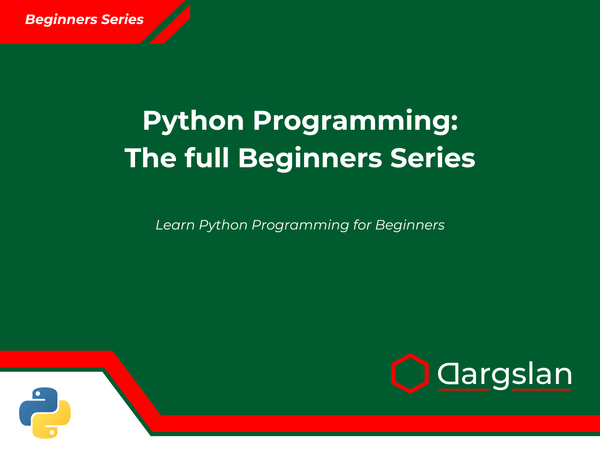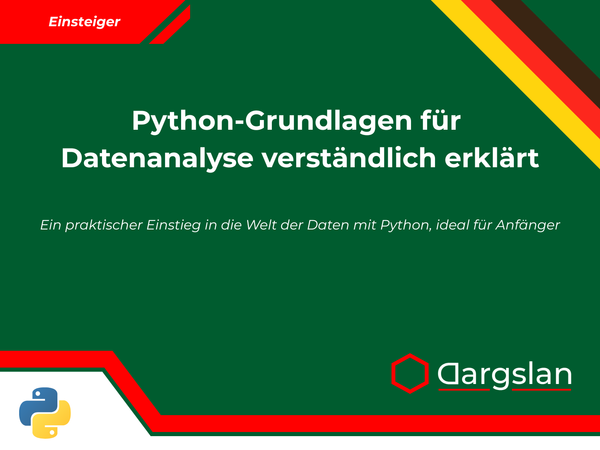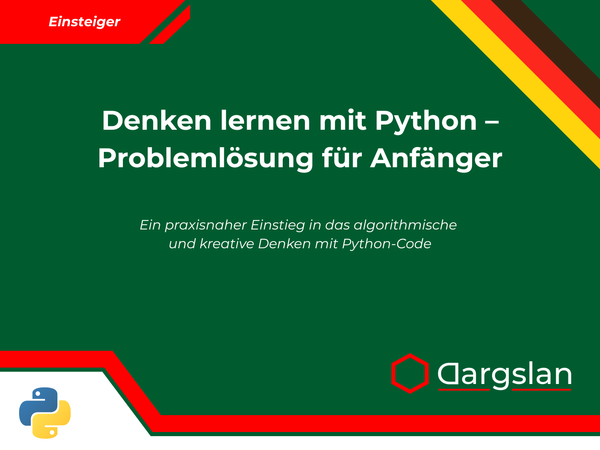Book Review: Automating Everyday Tasks with Python for Beginners
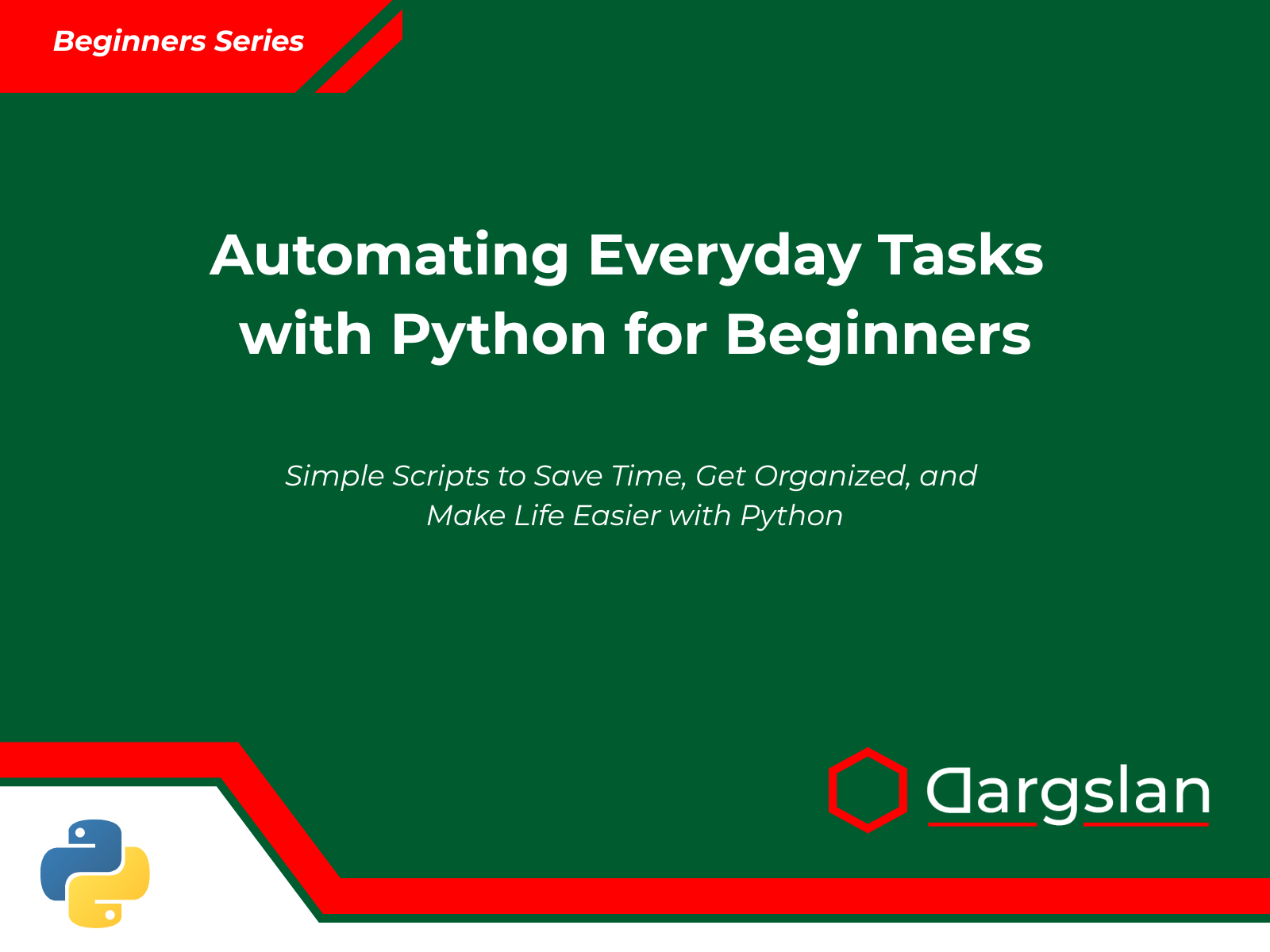
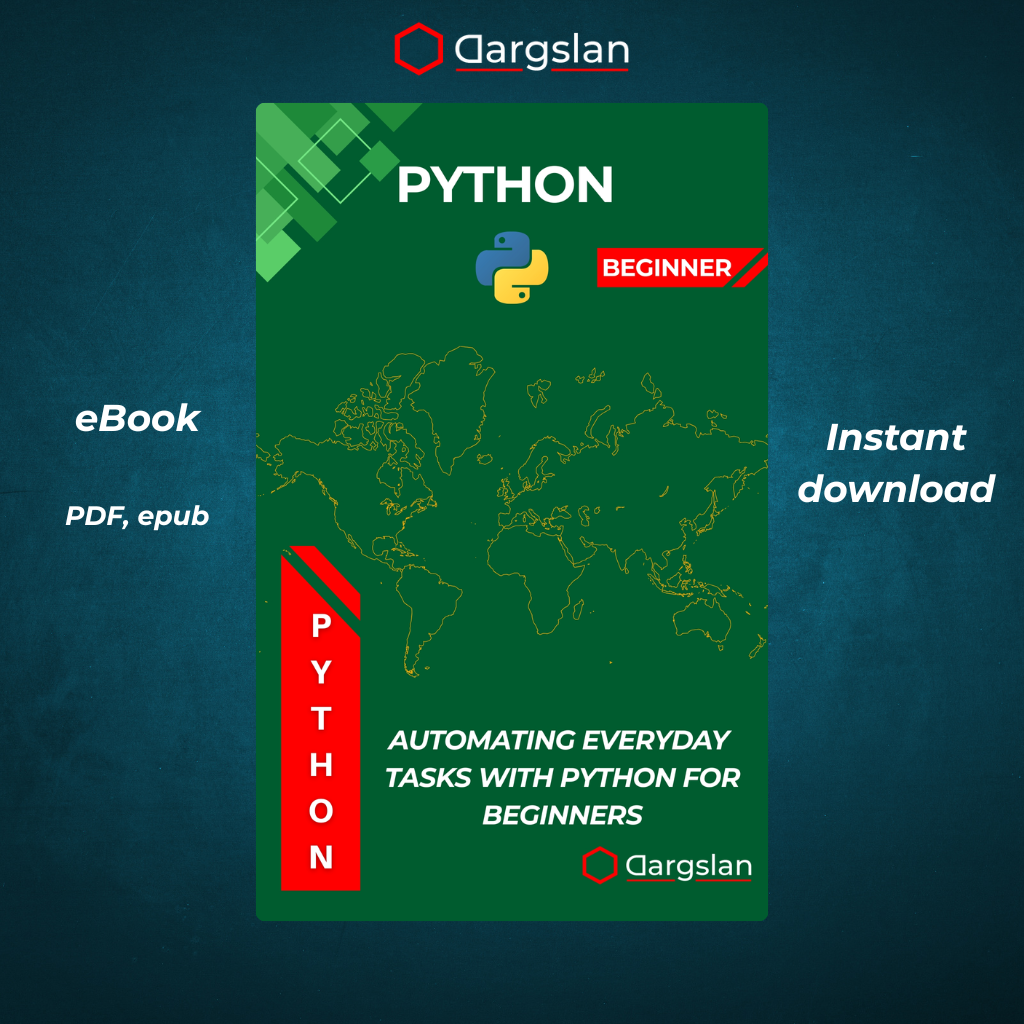
Automating Everyday Tasks with Python for Beginners
Simple Scripts to Save Time, Get Organized, and Make Life Easier with Python
Comprehensive Review: "Automating Everyday Tasks with Python for Beginners" - The Ultimate Guide to Personal Productivity Through Code
Executive Summary
"Automating Everyday Tasks with Python for Beginners" delivers precisely what its title promises – a practical, accessible approach to harnessing Python's power for everyday efficiency. Author Dargslan expertly bridges the gap between programming theory and real-world application, creating an essential resource for anyone looking to save time through automation. Whether organizing files, managing emails, or scraping websites, this book transforms Python from an abstract programming language into a practical tool for daily life enhancement.
Introduction: Why This Book Matters in 2023
In today's digital landscape, automation isn't just for tech companies or IT departments – it's a crucial skill for everyone from students to professionals across all industries. As we navigate increasingly complex digital workflows, the ability to automate repetitive tasks has become invaluable for reclaiming our most precious resource: time.
"Automating Everyday Tasks with Python for Beginners" arrives at the perfect moment, democratizing automation by making Python accessible to non-programmers. Unlike many programming books that focus on theoretical concepts or professional software development, Dargslan's approach centers on immediate practicality – how can Python solve real problems in your daily life, right now?
Who Should Read This Book?
This book is ideally suited for:
- Complete programming beginners seeking a practical introduction to Python
- Office workers looking to streamline repetitive digital tasks
- Students wanting to organize files, research, and academic workflows
- Professionals from non-technical backgrounds interested in enhancing productivity
- Python beginners who understand syntax but want practical applications
- Productivity enthusiasts searching for technical solutions to time management
- Self-learners who prefer project-based, hands-on learning approaches
The beauty of Dargslan's approach is its accessibility. While the book assumes no prior programming knowledge, it progresses at a pace that keeps even readers with some Python experience engaged.
Chapter-by-Chapter Breakdown
Chapter 1: What Is Automation, and Why Python?
The book opens with a compelling case for automation, presenting it not as a technical luxury but as an essential life skill. Dargslan expertly positions Python as the ideal language for beginners due to its readable syntax, extensive libraries, and thriving community support.
The author provides relatable examples of daily tasks ripe for automation – from organizing downloads folders to extracting data from websites – establishing the practical framework that defines the entire book. Particularly impressive is the section on "automation thinking" – training readers to identify automation opportunities in their daily routines.
Key Highlights:
- Clear explanation of automation benefits across different lifestyle contexts
- Compelling comparison of Python vs. other automation tools
- Practical framework for identifying automation opportunities
- Realistic expectations about learning curve and benefits
Chapter 2: Python Basics for Automation
Rather than a comprehensive Python tutorial, Chapter 2 offers a focused introduction to Python elements most relevant to automation tasks. This pragmatic approach means readers can create useful scripts much sooner than with traditional programming books.
The curriculum is thoughtfully structured, covering:
- Python installation and environment setup with clear screenshots
- Essential data types and structures (with automation-focused examples)
- Control flow concepts explained through practical scenarios
- Introduction to functions and modules specifically useful for automation
- File manipulation fundamentals – the backbone of many automation scripts
Each concept is illustrated with examples framed in automation contexts, making abstract programming ideas immediately applicable.
Key Strengths:
- Prioritizes automation-relevant Python features over comprehensive language coverage
- Each example ties directly to practical use cases
- Clear, jargon-free explanations ideal for beginners
- Helpful practice exercises with real-world relevance
Chapter 3: Organizing Files and Folders Automatically
Chapter 3 delivers immediate value with scripts that tackle the universal problem of digital clutter. The progression from simple file operations to sophisticated organization systems is expertly paced, allowing readers to see results quickly while building toward more complex solutions.
The projects include:
- Automatic organization of download folders by file type
- Creation of dated backup systems
- Duplicate file identification and removal
- Batch file renaming with pattern matching
- Photo organization by metadata (date taken, resolution, etc.)
Each project includes complete code, line-by-line explanations, and suggestions for customization.
Most Valuable Features:
- The scripts are immediately useful even for programming novices
- Excellent explanation of the
osandshutilmodules' capabilities - Error handling sections prepare readers for real-world implementation
- "Extending the Script" sections encourage experimentation and customization
Chapter 4: Automating Email Tasks
Email management represents one of the most time-consuming aspects of digital life, making Chapter 4's content particularly valuable. Dargslan covers both sending automated emails and processing incoming messages – tasks with applications ranging from personal reminders to business communications.
Notable projects include:
- Automated email sending based on triggers or schedules
- Creating personalized email sequences from data sources
- Email filtering and organization scripts
- Automatic response systems for specific message types
- Extracting and processing information from emails
The author navigates the technical challenges of email protocols and security considerations with remarkable clarity, making complex concepts accessible to beginners.
Standout Elements:
- Comprehensive coverage of both
smtplibandimaplib - Clear explanation of email security and authentication
- Practical examples for both personal and professional use cases
- Thoughtful discussion of email automation ethics and best practices
Chapter 5: Working with Spreadsheets and CSV Files
For many professionals, spreadsheet manipulation represents the most immediately valuable automation opportunity. Chapter 5 delivers with comprehensive coverage of Excel and CSV automation using Python's pandas, openpyxl, and csv modules.
The projects progress logically from basic data extraction to complex spreadsheet generation:
- Reading and writing CSV files programmatically
- Automated data cleaning and transformation
- Creating reports and visualizations from spreadsheet data
- Combining data from multiple sources
- Automating repetitive Excel tasks
The real-world scenarios – including budget tracking, sales analysis, and data consolidation – make the abstract concepts immediately applicable to readers' lives.
Key Assets:
- Clear comparison of different Python spreadsheet libraries and when to use each
- Excellent visualizations showing how data flows through transformation processes
- Practical examples relevant to both personal and professional contexts
- Performance optimization tips for handling larger datasets
Chapter 6: Automating Web Tasks (Scraping & Requests)
Web automation opens enormous possibilities, from data collection to service integration. Chapter 6 skillfully introduces web concepts alongside practical Python implementation using the requests and BeautifulSoup libraries.
Projects in this chapter include:
- Automated data collection from websites
- Price tracking and notification systems
- Content aggregation from multiple sources
- Automated form submission and interaction
- API usage for service integration
The author carefully balances technical detail with accessibility, ensuring readers understand core web concepts without getting overwhelmed.
Particularly Valuable Sections:
- Ethical web scraping guidelines and best practices
- Clear explanation of HTML structure for non-web developers
- Exception handling for robust web scripts
- Strategies for dealing with dynamic websites and anti-scraping measures
Chapter 7: Automating PDF and Text Files
PDF and text processing affect nearly everyone's workflow, making Chapter 7's content universally relevant. From extracting information from PDFs to generating reports, these automation skills solve persistent challenges in academic, business, and personal contexts.
The chapter covers:
- Extracting text and data from PDF documents
- Merging, splitting, and organizing PDF files
- Automated text analysis and information extraction
- Converting between text formats
- Creating PDF reports from various data sources
The projects strike an excellent balance between simplicity and practical utility.
Highlight Features:
- Comprehensive coverage of both
PyPDF2andpdfplumberlibraries - Text analysis techniques using NLTK and regular expressions
- Clear examples of combining PDF and text automation with other skills
- Creative applications for academic research and business reporting
Chapter 8: Scheduling Scripts Automatically
Chapter 8 elevates all previous concepts by showing readers how to execute their Python scripts automatically based on triggers, schedules, or events. This critical skill transforms automation scripts from manual tools to truly autonomous systems.
The chapter expertly covers:
- Scheduling with native OS tools (Task Scheduler, cron)
- Python-based scheduling options
- Event-based automation triggers
- Logging and monitoring automated scripts
- Error handling for unattended script execution
The author's thorough coverage of different operating systems ensures all readers can implement scheduling regardless of their platform.
Most Valuable Content:
- Cross-platform approach covering Windows, macOS, and Linux
- Practical logging implementation for troubleshooting
- Security considerations for automated scripts
- Creative triggering mechanisms beyond simple time scheduling
Chapter 9: Fun Everyday Automations
Chapter 9 provides a refreshing shift toward creative applications, demonstrating Python's versatility beyond workplace productivity. These lighthearted yet practical projects help reinforce earlier concepts while expanding readers' vision of automation possibilities.
Engaging projects include:
- Automated social media interactions
- Weather and news briefing systems
- Personal finance tracking and notification
- Entertainment recommendation engines
- Smart home integration with Python
These projects particularly shine in demonstrating how to combine multiple automation skills into integrated systems.
Notable Qualities:
- Cross-domain integration of multiple Python libraries
- Emphasis on personalization and customization
- Accessible API usage for popular services
- Inspiration for readers to develop their own creative projects
Chapter 10: Putting It All Together – Personal Automation Projects
The final chapter presents comprehensive case studies that combine techniques from throughout the book into complete automation systems. These sophisticated examples demonstrate how individual skills can create transformative workflow solutions.
The case studies include:
- A complete document processing system for academic research
- Automated personal finance management
- Digital content curation and organization
- Business reporting and analytics automation
- Personal productivity dashboard
Each project includes system architecture diagrams, complete code, deployment instructions, and customization guidance.
Standout Features:
- Excellent system design principles for larger projects
- Thoughtful discussion of project planning and implementation
- Modular approach allowing readers to adapt components for their needs
- Maintenance and troubleshooting guidance for long-term automation
Appendices: Additional Resources for Continued Learning
The book's appendices provide exceptional value for continued learning:
- Appendix A: Useful Python Modules for Automation - A comprehensive reference of Python libraries organized by automation domain
- Appendix B: Beginner Error Fixing Guide - Troubleshooting common Python errors with automation-specific examples
- Appendix C: Script Templates to Reuse - Modular, commented code templates for quick implementation
- Appendix D: Project Ideas for 30 Days of Practice - A structured practice program to build automation skills
These resources transform the book from a one-time read into an ongoing reference for automation development.
Technical Implementation and Quality
The book's code examples deserve particular praise for several reasons:
- Readability: Even complex scripts are written with clarity prioritized over cleverness
- Error handling: Real-world robustness is incorporated from the beginning
- Documentation: Clear comments explain not just what the code does, but why
- Modularity: Code is structured to encourage reuse and customization
- Best practices: Examples follow Python conventions and modern approaches
Dependencies are clearly specified, with thoughtful explanation of library selection and alternatives. Installation instructions are thorough, with separate guidance for Windows, macOS, and Linux environments.
Educational Approach and Accessibility
Dargslan's teaching methodology combines several effective approaches:
- Conceptual explanations provide necessary background without overwhelming detail
- Annotated code examples connect abstract concepts to concrete implementation
- Incremental complexity builds confidence through progressive challenges
- Problem-solution framing keeps focus on practical applications
- Extension opportunities encourage experimentation and creativity
The writing style maintains an encouraging, conversational tone while delivering substantive technical content. Complex concepts are frequently illustrated with diagrams and flowcharts, supporting visual learners.
Comparative Analysis: How This Book Stands Out
"Automating Everyday Tasks with Python for Beginners" distinguishes itself from other Python books through several key differentiators:
- Practical focus: Unlike books emphasizing programming theory, every concept directly connects to useful applications
- Immediate applicability: Readers can implement valuable automation after just a few chapters
- Cross-domain relevance: Projects span personal, academic, and professional contexts
- Integrated approach: Later chapters demonstrate combining techniques into comprehensive systems
- Accessibility for true beginners: No prior programming knowledge is assumed, yet content remains engaging for those with some experience
Compared to other automation-focused resources, this book provides more thorough Python explanations, making it suitable for complete beginners. Compared to general Python tutorials, it delivers more immediate practical value through its focus on everyday automation.
Real-World Applications and Benefits
Readers can expect tangible benefits in multiple areas:
Professional Applications:
- Streamlined reporting and data analysis workflows
- Automated document processing and management
- Simplified information collection and organization
- Enhanced communication through email automation
- Time savings for repetitive digital tasks
Personal Productivity:
- Organized digital files and media collections
- Automated financial tracking and notification
- Streamlined information gathering from websites
- Customized data extraction from documents
- Personal system integration and notification
Academic Uses:
- Research data collection and organization
- Literature review and citation management
- Dataset cleaning and preparation
- Assignment submission and organization
- Study resource aggregation and processing
Areas for Improvement
While "Automating Everyday Tasks with Python for Beginners" excels overall, a few areas could be enhanced:
- More coverage of virtual environments would help readers manage dependencies for different projects
- Additional guidance on debugging strategies specific to automation scripts would be valuable
- More discussion of performance optimization for scripts processing larger datasets
- Expanded coverage of API authentication methods beyond basic approaches
- Additional examples for Linux and macOS users in certain OS-specific sections
These minor opportunities for improvement don't detract significantly from the book's exceptional value.
Conclusion: Final Assessment and Recommendation
"Automating Everyday Tasks with Python for Beginners" achieves a rare balance – it's both accessible to complete beginners and immediately useful for practical applications. Dargslan has created a resource that transcends the typical programming book by focusing on tangible improvements to daily digital life.
The strongest recommendation for this book comes from its versatility. For programming novices, it provides a purpose-driven introduction to Python fundamentals. For productivity enthusiasts, it delivers immediate tools to reclaim time from repetitive tasks. For professionals in non-technical fields, it opens doors to efficiency improvements previously reserved for software developers.
In the growing landscape of automation resources, this book stands out for its practical focus, clear explanations, and cross-domain applicability. For anyone seeking to enhance their digital productivity through Python automation, "Automating Everyday Tasks with Python for Beginners" is an essential resource and an outstanding investment in personal efficiency.
Meta Information for SEO Purposes
Primary Keywords: Python automation, Python for beginners, automating tasks with Python, Python productivity, everyday automation, learning Python automation
Secondary Keywords: file organization Python, email automation Python, PDF automation, web scraping for beginners, spreadsheet automation, scheduling Python scripts
Meta Description: Discover how "Automating Everyday Tasks with Python for Beginners" transforms programming novices into automation experts with practical Python scripts for file management, emails, web tasks, and more.
Target Audience: Programming beginners, productivity enthusiasts, office workers, students, professionals seeking automation skills, Python learners wanting practical applications
Key Differentiators: Practical focus on everyday tasks, accessible to complete beginners, cross-domain applications, comprehensive project examples, modular code templates for customization
